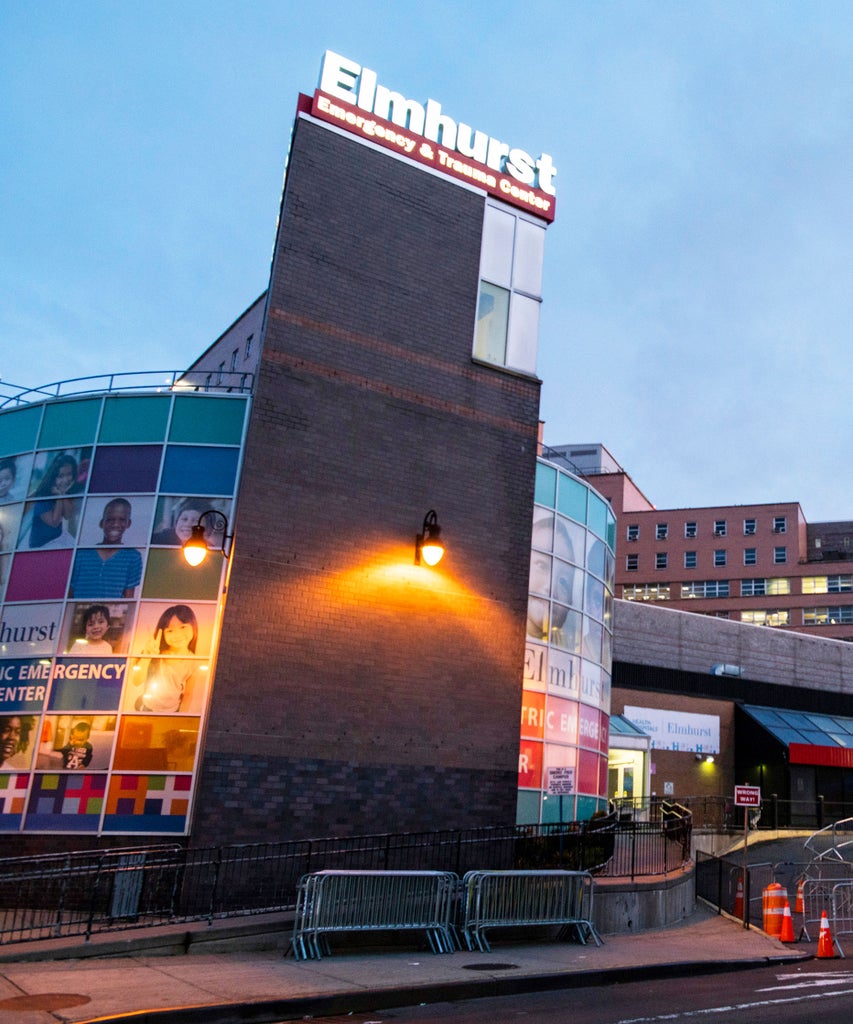
Elmhurst Hospital in Queens, New York is one of the oldest in the state and serves one of its largest and most diverse populations. It’s a public hospital, one of 11 operated by NYC Health and Hospitals, including Jacobi Medical Center in the Bronx and Bellevue Hospital in Manhattan. These hospitals serve an important role within their communities; they’re a safety net for people — many of them non-English speaking — who don’t have reliable access to healthcare, let alone a primary care doctor. In the last few days, Elmhurst has also become a terrifying window into what the future holds for America’s battle with coronavirus: Yesterday, 13 people died there from COVID-19. The morgue holds only 12.
AdvertisementADVERTISEMENT
Dr. Lillian Wong, an emergency room doctor, has worked at Elmhurst for three years. She spoke with Refinery29 at 10pm on Tuesday, after coming off a long shift. She didn’t mince words. “We are trying our best not to intubate patients because we only have a few dozen ventilators and the only time a ventilator becomes available is when another patient dies. We’re trying to use CPAP machines, but we don't have enough personel to keep an eye on all these patients and it’s become dangerous. A lot of these patients – they look good until they don't. They're talking to us. But they can deteriorate incredibly quickly and we just don’t have the resources to keep an eye on them at all times.”
.@nytimes has video from a hospital in Elmhurst, Queens. It is horrifying.
— Tim Hogan (@timjhogan) March 26, 2020
“We had to get a refrigerated truck to store the bodies of patients who are dying.”
“Five ventilators...there’s a mythical 100 ventilators out there that we haven’t seen.” https://t.co/zARPofu6pS pic.twitter.com/JxKl46H5RC
Wong described a scenario where everything is in short supply. “We don't even have enough stretchers. Some people are lying across chairs. And the floors upstairs are flooded with patients,” she said. “Doctors are given one mask per day. And every time we use a mask for the day we spray that one and then the next day when we get another we save that one because we know we might run out altogether.”
Wong is particularly troubled by what she sees as mixed messages coming from the government. “Trump says he wants to open everything up by Easter. That's not going to happen. And if it happens, he's just going to have more people dying,” she said. “If you look at Louisiana, they didn't close down, and the numbers grow exponentially day by day. This is not the end of it. It’s the beginning.”
AdvertisementADVERTISEMENT
She pointed also to misinformation from American politicians who downplayed the severity of the virus, even as other countries tried to warn the United States. “This virus cannot tell between nations and ethnicities,” Wong explained. “China made their experience available to the world. They closed their borders in Wuhan.They were able to rapidly build a bunch of hospitals for the season. They started manufacturing more medical and safety equipment. They gave this information to providers around the world. Italy and Germany were examples for us of what we should have been doing as well.”
And while health care professionals here are scrambling to save lives, they don’t have adequate time to collect important data, but Wong has noticed, anecdotally, that the fatalities follow a different pattern from the outbreak in Italy, where most of the patients who died were elderly and had a number of comorbidities. In Queens, Wong’s patients are in their 30s, 40s, and 50s, and don’t seem to have underlying conditions. She also said that men seemed less likely to recover than women – whether that was related to jobs in industries like construction and food service, she couldn’t say definitively, though it confirms a pattern that’s emerged across the globe. But, Wong is confident that the best thing healthy people can do to contribute to the efforts of those fighting on the front lines of this disease is simple enough: Stay home.
“The medical community wants a lot of things. We want ventilators, we want the supplies, we want oxygen tanks and monitors and space. We also want to protect ourselves. We have families at home,” Wong said. “No matter how old or how young you are, how well you look or whatever medical policies you do or don't have, you can die. So it’s really not hard to ask the public to stay home, to stop being social. That’s what we’re asking for.”
AdvertisementADVERTISEMENT






